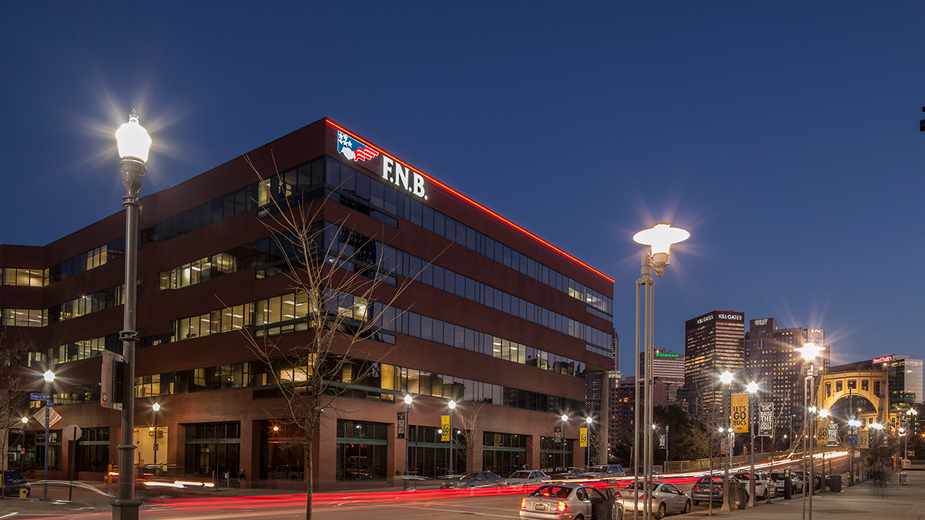General Motors Lordstown Awaits Its Future
LORDSTOWN Ohio – Matt Streb considers himself among the fortunate.
“Once the layoffs hit, a lot of people panicked,” Streb recalls. “I have my degree in communications, and I worked as a mailman for a few years, so I had some options.”
Streb was among the more than 800 hourly workers placed on layoff in January at General Motors Co.’s Lordstown complex. Shrinking sales of the Chevrolet Cruze, the small sedan manufactured at the giant factory, forced the corporation to scale back production and eliminate the third shift at the plant.
Ten months later, sales of the Cruze have yet to rebound as consumers, encouraged by low fuel prices, abandon the sedan and small-car market for larger crossover and sport-utility vehicles. This shift in consumer tastes has fueled uncertainty about the plant’s future among the workforce – where unsubstantiated rumors circulate daily.
And why wouldn’t the workforce be worried? Aside from the elimination of the third shift in January, this year GM Lordstown has endured five weeks of shutdowns over the summer, and more downtime is tentatively scheduled for two weeks early next year. Meanwhile, the pending consolidation of the plant’s two union locals has led to more concerns.
Still, others are confident that the assets of the Lordstown plant more than offset its liabilities in the race for a new product – a product that GM is mulling over as it gears up for future models. Those still in the plant say they plan to ensure Lordstown is in the most competitive position to secure a new product – or products.
“These are the times that separate your plant from the rest out there,” says Robert Morales, president of Local 1714 of the United Auto Workers, which represents about 900 hourly workers at the metals stamping plant. “Our groups have gone through quite a bit of changes.”
Among these changes is the planned absorption of Local 1714 into UAW Local 1112, which represents more than 2,000 hourly employees in the assembly plant.
In September, the national UAW informed the locals that 1714 would merge into Local 1112, which would then represent about 3,000 workers at the complex. Combining the locals – Lordstown is the only GM plant with two representing its workers – allows the complex to be more efficient and competitive, Morales asserts.
The merger should be completed by the first week of February, he says, ending 47 years of Local 1714 representation.

Pictured: Robert Morales, president of Local 1714 of the United Auto Workers.
GM brass in Detroit is considering adapting its product line to better meet customer demand as it mulls whether to cancel at least six passenger car lines in the U.S. market after 2020.
In July, members of the UAW leadership met with GM executives to discuss products in production at “underused” plants such as Hamtramck near Detroit and Lordstown.
After that meeting in July, UAW International President Dennis Williams told reporters that the union is talking with GM to assess whether it makes sense to eventually replace the products manufactured in those plants with more popular vehicles such as crossovers.
“I think they’ve seen what we can do,” Morales says. “How we handle adversity goes a long way with the company and the International, and it puts us in a more competitive place.”
Roughly 200 senior employees represented by 1714 are on layoff while another 200 temporaries were let go in January. The shift reduction also means additional training for those moving into new positions, he adds.
GM is committed to building the Cruze at least until 2021, Morales says, and notes that all Cruzes manufactured in the United States would be built at the Lordstown plant.
“Our work isn’t done,” Morales says. “We still have to be viable and work through adversity, and at the same time, we know there are opportunities to bring in new products to the facility. If you’re not in the arena, you’re not in the game.”
Struggling sales in the small and midsize sedan market, plus an overall drop in sales across the board, have led automakers such as GM to reduce output to align inventory with customer demand.
Lordstown isn’t the only plant affected by this shift. GM’s Hamtramck factory, for example, relies heavily on production of small and midsize sedans.
The Hamtramck plant produces the Buick LaCrosse, Cadillac CT6, Chevrolet Impala and the Chevrolet Volt, which make up a good segment of GM’s sedan market. In October, the automaker announced plans to cut about 200 jobs there and halt production beginning Nov. 20 through the Christmas break, affecting 1,500 jobs over the holidays.
“The Lordstown plant parallels other moves in other plants,” observes Bernard Swiecki, senior automotive analyst for the Center for Automotive Research, based in Ann Arbor, Mich. “Sedans are struggling,” he observes, “and market forecasts in the overall market are flat or slightly declining.”
The Lordstown plant has several attributes working in its favor, even in difficult times for the small car, Swiecki says. Its product, the Chevrolet Cruze, isn’t the softest part of the sedan segment.
“This is an absolutely competitive vehicle with a great reputation,” he says. “It’s a market dynamic that we’re facing here.”
Once gas prices spike again, Swiecki says that sales of models such as the fuel-efficient Cruze would likely rebound because of its great consumer and analyst ratings. Plus, larger sedans such as the Malibu and Impala are faring worse overall in this market than smaller cars such as the Cruze.
Another advantage at Lordstown is that the complex operates its own stamping plant that serves its assembly and production line, Swiecki says, an asset no other U.S. automaker has. “The Detroit Three used regional stamping plants instead of adjacent factories,” he says. “Lordstown having stamping on-site means greater efficiencies, lower costs.”
And an advantage is that Lordstown is a very large plant, which doesn’t count against it when it comes to competing for another vehicle, or more than one vehicle, Swiecki says. “When it comes to expansion, it’s good to have that space available,” he says.
GM Lordstown’s scale and capacity, plus an established stamping and supply base near the plant, all work in its favor.
Challenges to the sedan market remain, Swiecki says. Today, sport-utility vehicles and crossovers are smaller than they were 15 years ago and based on a car platform instead of a truck platform.
“We have spawned a whole new subsegment,” he says, “Compact entry-level crossovers based on a platform of a small sedan.”
While demand for sedans is on the wane, their platforms serve other models in GM’s portfolio, such as the Buick Encore. “That’s been an unexpected hit for Buick,” the analyst says.
Millennials, who once gobbled up the small-car models, have begun to raise families and gravitated to larger vehicles, Swiecki says. At the same time, younger buyers have more choices in the smaller, sportier crossover market.
“The SUVs are smaller and more fuel-efficient today,” says Diane Sauer, owner of Diane Sauer Chevrolet in Warren. “In the past, there was just a car or a big SUV; now we have more choices. The Chevrolet Equinox is our most popular model in the Mahoning Valley.”
Nevertheless, there will always be demand for a small car, Sauer affirms. “The Cruze is still doing well against its competitors,” she says. “If gas prices go up, sales will increase.”
GM reported just 8,646 deliveries of the Cruze during October. A year earlier, the Cruze enjoyed sales of more than 17,000. Simultaneously, sales of GM crossovers increased 12% last month.

Pictured: Debbie Gregory is monitoring and confirming the electronics system of a newly built Cruze as it comes down the assembly line.
What is clear is that the automotive industry has been the driving force behind the economic recovery in the domestic manufacturing sector, responsible for many of the jobs created in manufacturing over the last two years.
Mark Muro, senior fellow of the metropolitan policy program at the Brookings Institute, a Washington, D.C.-based think tank, observes that automotive-related industries accounted for some 40% of the country’s increase in employment in manufacturing over the last two years.
Even in a sluggish hiring market, the automotive industry accounted for 80% of job growth in manufacturing through 2016 and the first quarter of this year, Muro says.
“Auto has been the recent driver in manufacturing jobs and remains an important anchor in the whole manufacturing sector,” he says. “If the automotive sector slows, that will ripple through the whole manufacturing sector.”
Muro observes the auto industry has enjoyed “a great run” since its near collapse in 2009-2010. Automakers have been managing their plants and operations tighter since the Great Recession, so it’s not unusual that cutbacks in the workforce coincide with lower sales.
“It’s a very cyclical industry,” he says.
The Lordstown plant remains essential for the regional economy as vendors, suppliers, contractors, and small businesses rely on the income the complex generates.
“It’s big for us,” says Lordstown Mayor Arno Hill. Income tax from the plant’s payroll accounts for about 60% of the village’s budget.
The village of Lordstown has diversified its employer base over the last 25 years, Hill adds, and that’s helped reduce its dependence on the plant. “It’s not as much as it was 25 years ago,” he adds. “It used to account between 80% to 85% of the budget.”
A manager at Jamestown Industries in Austintown who wouldn’t identify himself says that he’s been forced to place his third shift on layoff because of the reductions at Lordstown.
“What they do constitutes what we do,” he says. Jamestown Industries sequences the front and rear fascias for the Chevrolet Cruze. About 12 employees were cut when Lordstown ended its third shift.
“We’re concerned – everyone is,” he says. “But for right now, we can’t predict the future.”
Meanwhile, those affected by slow sales of the Cruze are working to repair their livelihoods.
Streb, the Lordstown line employee placed on layoff in January, was among those workers who rode the hiring wave into the plant and secured a job that he says provided great wages and benefits.
“I was a permanent employee, but didn’t have enough time to avoid the layoffs,” he recalls, noting he worked at the plant nearly four years.
His position paid well – more than adequate to support his family – while the benefits package sponsored by the company was second-to-none, Streb says. Finding another job that matched these wages and benefits, especially in the Mahoning Valley, would be difficult. “I made an excellent living out there,” he remarks.
Job interviews came and went with no offers, and Streb began to suspect that employers were reluctant to hire him because of his GM experience – that once the demand for Cruzes rebounded he would be called back and leave his new position.
“I got the overwhelming sense that they felt I would go back to GM as soon as the company called,” he says.
Streb was lucky. He applied for a position at the Ohio Bureau of Workers’ Compensation and started work there Sept. 5. “Salary-wise, it’s right up there with my old job,” he says. “I’ve talked to other friends, and they have yet to find anything to match their old wages.”
Copyright 2024 The Business Journal, Youngstown, Ohio.



